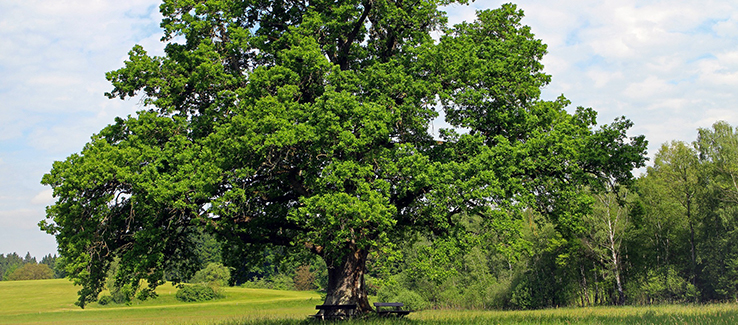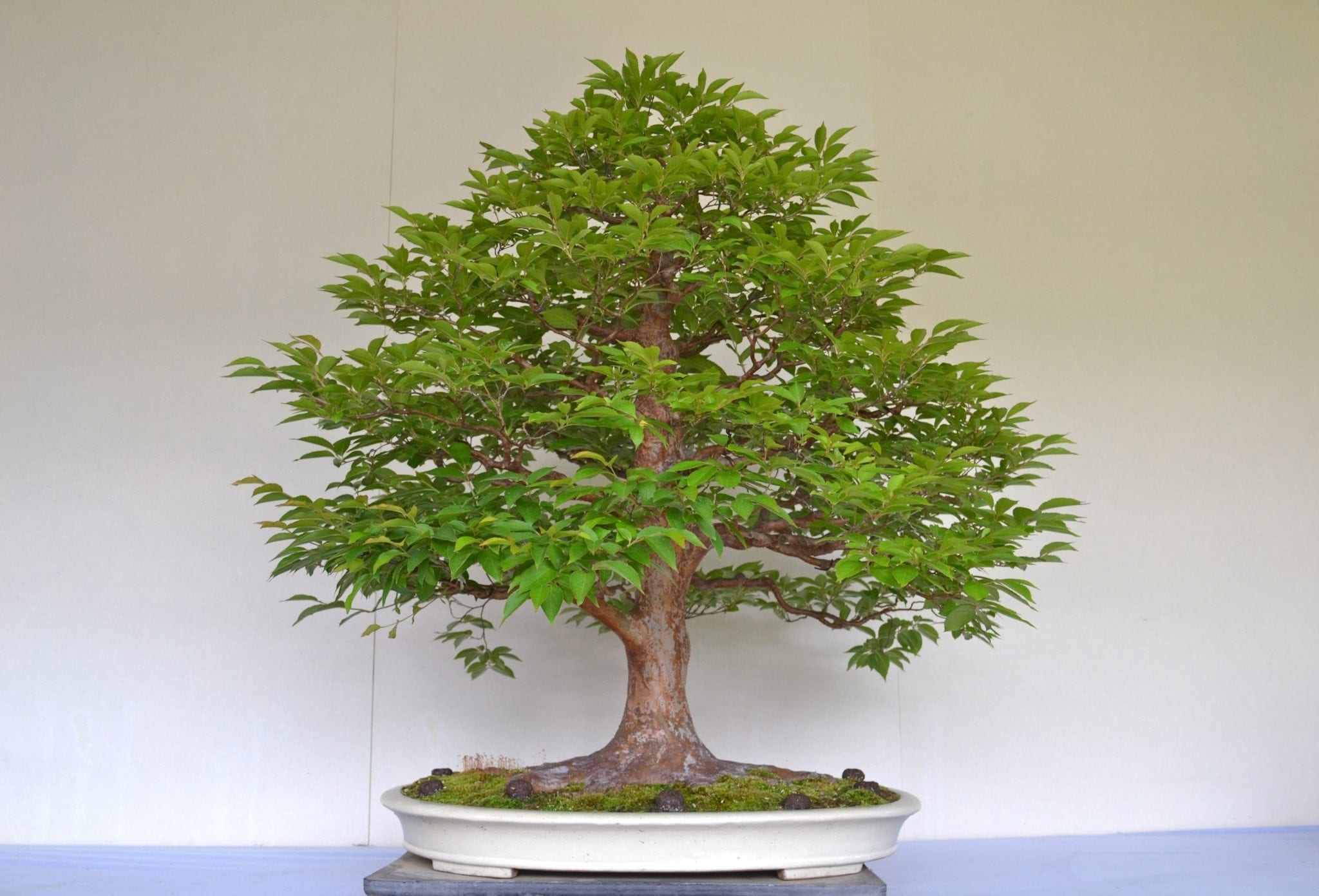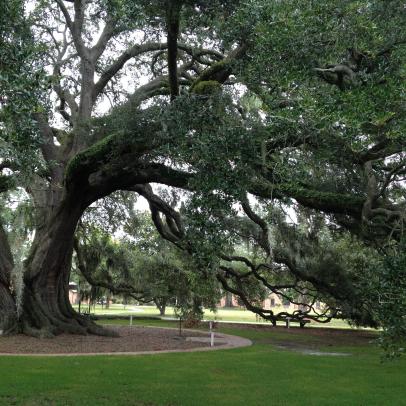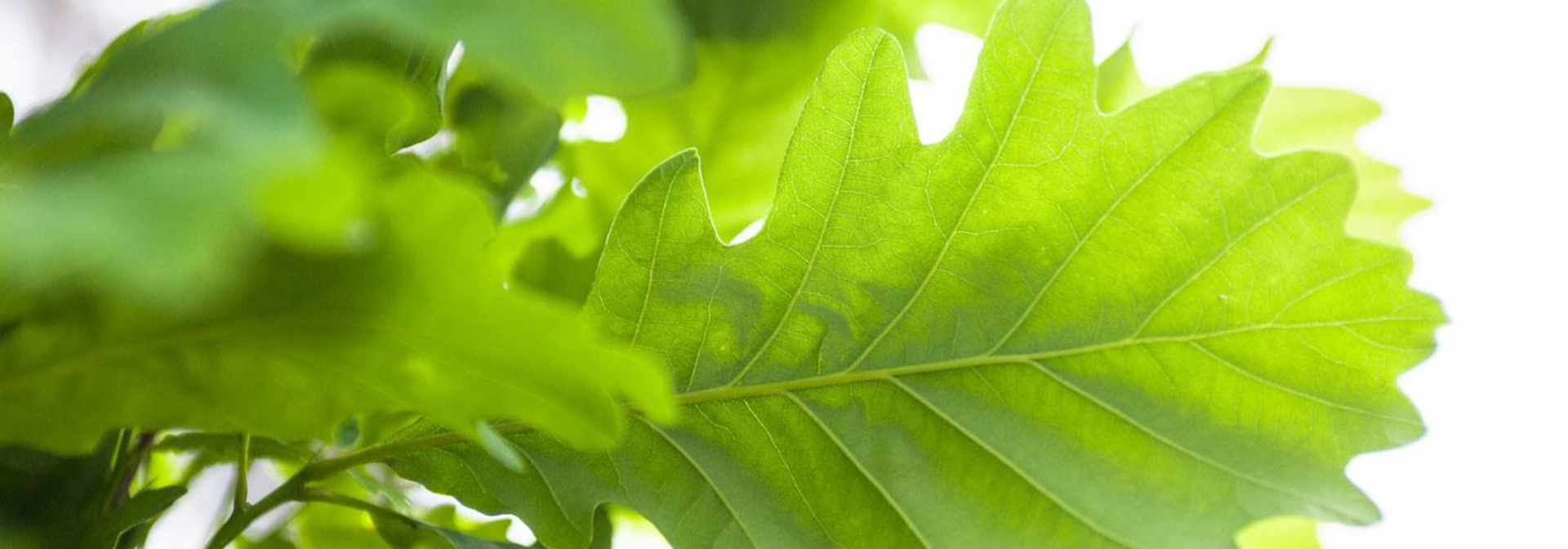
How to Keep an Oak Tree Small: The Secrets Revealed
Oaks are among the most popular trees for landscaping in the United States. They are hardy, long-lived, and have attractive foliage. Many people choose to plant oak trees because they want a stately tree that will provide shade and be a focal point in their yard.
However, some oaks can grow to be quite large, making them unsuitable for small yards or gardens. If you want to keep your oak tree small, you can do a few things.
- Start by pruning the oak tree when it is young
- Cut back any branches that are growing too long or too big
- You can also remove any suckers that are growing from the base of the tree
- Once the tree is older, you will need to prune it every few years to keep it small
I. Understanding Oak Tree Growth
Factors Influencing Oak Tree Size
Keeping an oak tree small requires an understanding of the factors that influence its growth. Here are some key factors to consider:
- Species:Different species of oak trees have varying growth patterns and sizes. Some species naturally stay small, while others can grow to be quite large.
- Genetics:The genetics of the tree play a significant role in determining its size. Some oak tree varieties are bred to have smaller growth characteristics.
- Environmental Conditions:The environment in which the oak tree is planted can impact its growth. Factors such as soil fertility, moisture levels, and sunlight availability can all contribute to size.
- Pruning:Regular pruning can help control the size of an oak tree. By selectively removing branches, you can redirect growth and maintain a smaller shape.
- Watering and Fertilization:Proper watering and fertilization can promote healthy growth while preventing excessive size. It’s important to provide the tree with adequate but not excessive water and nutrients.
- Root Restriction:In some cases, root restriction techniques can be employed to limit the tree’s size. This involves creating physical barriers or using root pruning methods to control root growth.
By understanding these factors and taking appropriate measures, you can effectively keep an oak tree small and well-managed in your garden or landscape.

II. Pruning Techniques for Oak Trees
When it comes to keeping an oak tree small, pruning is essential. Here are some pruning techniques that can help control the growth and maintain a smaller size for your oak tree:
Pruning basics for controlling growth
- Remove lower branches:By removing the lower branches of the oak tree, you can direct its growth upwards and prevent it from spreading out too much.
- Thin out the canopy:Thinning out the canopy by removing overcrowded branches allows better air circulation and light penetration, which helps control the overall size of the tree.
- Prune for shape:Regularly pruning the oak tree for shape can help prevent it from growing too tall or wide. Be sure to consult a professional arborist to ensure the proper pruning techniques are applied.
Selective pruning for small size
- Crown reduction pruning:Crown reduction pruning involves selectively removing branches to reduce the height and spread of the oak tree. This technique can help maintain a smaller size without causing significant harm to the tree.
- Espalier pruning:Espalier pruning is a technique where the branches are trained to grow in a horizontal pattern against a support structure, such as a wall or fence. This method can be used to keep an oak tree’s size compact and controlled.
It’s important to note that pruning oak trees should be done with caution and proper knowledge. Consulting a professional arborist is highly recommended, as oaks have specific needs and can be prone to diseases if not pruned correctly.
For more information on pruning techniques for oak trees.

III. Container Gardening with Oak Trees
Container gardening is a great option for keeping oak trees small and manageable while still enjoying their beauty. Here are some benefits of container gardening for oak trees and some tips for successfully growing small oak trees in containers:
Benefits of container gardening for oak trees:
- Versatility:Container gardening allows you to place your oak tree in different locations, whether it’s on a patio, balcony, or even indoors.
- Controlled growth:By planting oak trees in containers, you can control their growth and prevent them from becoming too large for your space.
- Mobility:Containers make it easy to move your oak tree around to find the best sunlight and temperature conditions.
- Protection:Container gardening provides protection for your oak tree from harsh weather conditions or pests.
Tips for successfully growing small oak trees in containers:
- Choose the right container:Select a container that is large enough to accommodate the root system of the oak tree and has sufficient drainage holes.
- Use well-draining soil:Ensure that the soil you use in the container is well-draining to prevent root rot.
- Water regularly:Oak trees in containers require regular watering, especially during hot summer months. However, be careful not to overwater, as this can also lead to root rot.
- Provide adequate sunlight:Place your oak tree in a location that receives the right amount of sunlight for its specific needs. Most oak trees require full sun to thrive.
- Fertilize appropriately:Feed your oak tree with a balanced fertilizer specifically formulated for container plants. Follow the package instructions for application rates.
- Prune as needed:Regular pruning can help keep your oak tree small and prevent overcrowding in the container.
- Monitor for pests and diseases:Inspect your oak tree regularly for signs of pests or diseases. Treat any issues promptly to prevent further damage.
By following these tips and properly caring for your oak tree in a container, you can enjoy the beauty of these majestic trees without the worry of them outgrowing their space.
For more information about container gardening, you can visitContainer Gardeningon SARPO:
IV. Dwarf and Miniature Oak Tree Varieties
If you want to keep an oak tree small, there are several dwarf and miniature oak tree varieties that you can consider. These trees are specifically bred or naturally occurring varieties that have a smaller size compared to their standard counterparts. Here is an overview of some popular dwarf and miniature oak tree varieties:
- Quercus palustris ‘Green Dwarf’: This dwarf variety of the pin oak tree reaches a maximum height of only 12 to 15 feet. It has the characteristic lobed leaves and produces acorns like its larger counterpart.
- Quercus robur ‘Quercifolia’: Commonly known as the dwarf English oak, this variety grows to a maximum height of 25 feet. It has deeply lobed leaves and is a popular choice for small gardens.
- Quercus bicolor ‘Swampfire’: This miniature variety of the swamp white oak tree grows to a maximum height of 15 to 20 feet. It has attractive red fall foliage and is suitable for smaller landscapes.
Cultivating and caring for small-sized oak trees require similar techniques as their larger counterparts, but there are a few additional considerations to keep in mind:
- Planting location: Choose a location with enough space for the tree’s mature size, even if it is a dwarf or miniature variety. Ensure that the soil is well-draining and provides adequate sunlight.
- Pruning: Regular pruning is essential to maintain the desired size and shape of the oak tree. Prune the tree during winter or early spring when it is dormant, removing branches that are crossing or rubbing against each other.
- Watering and fertilizing: Provide the oak tree with regular water, especially during the first few years of growth. Fertilize the tree annually with a balanced, slow-release fertilizer to promote healthy growth.
- Pest and disease control: Keep an eye out for common pests and diseases that can affect oak trees, such as oak wilt and oak leaf blister. Regularly inspect the tree for signs of damage or infestation and take appropriate measures to control them.
Remember, even though dwarf and miniature oak tree varieties have smaller sizes, they still require adequate care and maintenance to thrive in your garden. Consult with a local arborist or horticulture expert for specific advice based on your area’s climate and soil conditions.
For more information on oak trees, you can visitWikipedia.

V. Oak Tree Crown Reduction
When it comes to keeping an oak tree small, crown reduction techniques and pruning considerations play a crucial role. Here are some techniques and considerations to help you maintain a small crown for your oak tree:
Techniques for reducing crown size in oak trees:
- Canopy thinning:Prune selective branches to reduce the density of the crown, allowing more sunlight to reach the lower branches.
- Canopy reduction:Carefully prune the outermost branches to reduce the overall size of the crown.
- Canopy lifting:Remove the lower branches of the tree to elevate the crown and create an open space underneath.
- Canopy shaping:Prune the tree in a way that enhances its natural form while reducing its overall size.
Pruning considerations for maintaining a small crown:
- Prune during the dormant season:It’s best to prune oak trees during the dormant season to minimize stress and potential damage.
- Avoid excessive pruning:Over-pruning can weaken the tree and make it more susceptible to diseases and pests.
- Follow proper pruning techniques:Make clean cuts just outside the branch collar to promote proper healing and reduce the risk of infection.
- Hire a professional:If you’re unsure about pruning techniques or dealing with larger branches, it’s recommended to hire a certified arborist to ensure the tree’s health and safety.
Remember, maintaining a small crown for an oak tree requires proper care and pruning techniques. If you’re not confident in your pruning skills, it’s always best to consult with a professional to ensure the tree’s long-term health and vitality.

VI. Root Pruning and Containment Methods
When it comes to keeping an oak tree small, root pruning and containment methods play a vital role. Here are some important aspects to consider:
The importance of root pruning in controlling size
- Root pruning involves selectively cutting and removing some of the tree’s roots to restrict its growth.
- By pruning the roots, the tree’s access to water and nutrients is reduced, which helps keep its size in check.
- Regular root pruning can prevent the tree from spreading its roots too widely and becoming too large for its surroundings.
Various methods for containing oak tree roots
- Planting the oak tree in a raised bed or container can help restrict its growth.
- Installing a root barrier around the tree can prevent the roots from spreading beyond a certain distance.
- Regularly trimming the tree’s canopy and branches can help balance its growth and prevent it from becoming too large.
Remember, oak trees are strong and resilient, so proper maintenance and regular monitoring are essential to ensure their size remains manageable. Consult an arborist or horticulturist for specific guidance on root pruning and containment methods for your oak tree.

VII. Soil and Nutrient Management for Small Oak Trees
Soil conditions that promote smaller oak tree size
To keep an oak tree small, it is important to create soil conditions that restrict its growth. Here are some soil management practices that can help achieve this:
- Limit soil fertility: Oak trees grow best in soil with moderate fertility. Avoid applying excessive amounts of fertilizer, especially nitrogen, as it can promote rapid growth.
- Control moisture levels: Oak trees prefer soil that is moist but well-drained. Avoid overwatering, as it can lead to excessive growth. Ensure the tree receives adequate water, but allow the soil to dry out slightly between waterings.
- Provide compacted soil: Compacted soil restricts root growth and can help keep the tree smaller. Avoid excessive tilling or root disturbance around the tree.
Nutrient adjustments for regulating growth
To regulate the growth of an oak tree, nutrient adjustments can be made. Here are some nutrient management practices that can help control growth:
- Reduce nitrogen: Nitrogen stimulates growth in plants. By reducing the nitrogen levels in soil, you can help control the size of the oak tree. It is important to note that a certain level of nitrogen is still necessary for the tree’s health, so consult with a professional before making any drastic adjustments.
- Balance other nutrients: It is important to maintain a balanced nutrient profile for the oak tree’s overall health. Adjustments to other nutrients, such as phosphorus and potassium, should be made based on soil test results and professional advice.
By implementing these soil and nutrient management practices, you can effectively keep an oak tree small and maintain its desired size. Remember to consult with experts and conduct soil tests for accurate recommendations based on your specific tree and soil conditions.
For more information on oak tree care, you can visitoak tree trunk and maintenance.

VIII. Managing Oak Tree Competition
When it comes to keeping oak trees small, managing competition from surrounding vegetation and preventing overcrowding are essential. Here are a few tips to help you achieve this:
Controlling surrounding vegetation
– Regularly prune and trim any nearby plants, shrubs, or trees that may be competing for sunlight, water, and nutrients with the oak tree.- Apply mulch around the base of the oak tree to suppress weed growth and reduce competition.- Avoid planting other large trees or deep-rooted plants near the oak tree as they can compete for resources.
Preventing overcrowding for smaller oak trees
– When planting multiple oak trees, provide adequate spacing between them to avoid overcrowding as they grow.- Regularly thin out weaker or less desirable oak trees to create more space and resources for healthier ones.- Monitor the growth of the oak trees and consider selective pruning to maintain their size and prevent overcrowding.
By implementing these strategies, you can effectively manage competition and ensure the healthy growth of your oak trees. For more detailed information on managing oak tree competition, check out the resources available onWikipedia.
IX. Regular Maintenance and Care for Small Oak Trees
Essential routines for maintaining size and health
Taking care of small oak trees is crucial to ensure their growth and health. Here are some essential maintenance and care routines to keep your oak tree small:
- Pruning: Regular pruning helps control the size of the oak tree and ensures proper air circulation and sunlight penetration. Prune branches that are growing too long or crossing each other.
- Watering: Proper watering is essential to keep the oak tree healthy and prevent overgrowth. Water the tree deeply and thoroughly, especially during dry spells.
- Fertilizing: Oak trees require adequate nutrients for healthy growth. Use a slow-release fertilizer specifically formulated for trees to provide essential nutrients to the soil.
- Mulching: Apply a layer of mulch around the base of the oak tree. Mulch helps retain moisture, regulates soil temperature, and suppresses weeds, promoting a healthy growing environment.
Remember, small oak trees require consistent care and attention to ensure their size remains manageable. Regularly monitor the tree for any signs of diseases or pests, and consult a professional arborist if necessary.
For more information on oak tree care, you can visitWikipedia.
Remember, the key to keeping an oak tree small is consistent maintenance and care. By following these essential routines, you can enjoy the beauty and benefits of an oak tree without the worry of it becoming overwhelming in size.

X. Long-Term Management Strategies
To keep an oak tree small, it requires long-term management strategies and regular assessments. Here are some tips to help you maintain the size of your oak tree:
- Future planning for continued size control:It’s essential to consider the ultimate size of the oak tree when planting it. Choose a smaller species or a dwarf cultivar that will naturally stay smaller in size.
- Regular assessments and adjustments:Regularly inspect the oak tree and make necessary adjustments to control its growth. Prune any excessive branches or limbs that may contribute to the tree’s size increase.
Remember to consult a professional arborist for proper guidance and techniques to keep your oak tree small and well-maintained.
For more information on oak tree care and management, you can visithere.
Can You Control the Size of an Oak Tree?
Yes, you can control the size of an oak tree. By pruning the tree regularly, you can keep it from growing too large.
How Do You Stunt the Growth of an Oak Tree?
If you want to stunt the growth of an oak tree, there are a few things you can do. First, you can prune the tree regularly. This will prevent it from growing too large.
Second, you can apply a growth hormone to the soil around the tree. This will prevent the tree from growing as quickly. Finally, you can water the tree less frequently.
This will cause it to grow more slowly.
Can You Cut the Top off an Oak Tree?
Sure, you can cut the top off an oak tree – but why would you want to? Most likely, you’d only be doing so for aesthetic reasons, as it’s generally not a good idea to prune a tree drastically. Oak trees are especially vulnerable to disease and pests if their branches are cut too close to the trunk, so it’s best to leave them be unless absolutely necessary.
Can You Make a Tree Stay Small?
When it comes to trees, size definitely matters. But what if you want a tree that will stay small? Is it possible to keep a tree from getting too big?
The short answer is yes, you can make a tree stay small. There are a few different ways to do this, but the most common is by pruning. Pruning is basically trimming off the branches of a tree to keep it at the desired size.
And while it may seem like a daunting task, pruning is actually pretty easy to do and only requires some basic tools and knowledge. Of course, not all trees can be pruned and kept small. Some species of trees simply grow too large no matter what you do.
So before you go out and buy a miniature tree for your yard, be sure to do your research first!
How to Trim a Young Oak Tree
If you have a young oak tree on your property, you may wonder how to best care for it. One important task is trimming the tree. Trimming a young oak tree can seem daunting, but it can be easily done with a few tips.
First, you’ll need to identify the branches that need to be trimmed. Generally, you’ll want to remove any dead or dying branches and any crossing or rubbing against each other. You’ll also want to thin out the canopy so that light and air can reach the inner parts of the tree.
Once you’ve identified the branches that need to be trimmed, use a sharp pair of pruning shears to cut them cleanly at their base. Be sure not to leave any jagged edges which could damage the tree’s bark. After you’ve trimmed all of the necessary branches, take a step back and assess your work.
Make sure that you haven’t removed too much foliage and that the cuts you made are clean and even. If everything looks good, then your young oak tree is ready for another growing season!
Should You Prune Young Oak Trees
When it comes to pruning young oak trees, there is some debate among landscapers and arborists. Some believe that pruning young oak trees can promote growth and improve the tree’s overall health, while others believe that pruning should be delayed until the tree is more established. So, what’s the verdict?
Should you prune young oak trees? Generally speaking, most experts agree that it’s best to wait until a young oak tree is at least three years old before pruning. This allows the tree time to develop a strong root system and become better established.
Once an oak tree is well-established, regular pruning can help promote growth and keep the tree healthy. Pruning young oak trees can also help them resist disease and pests. Removing dead or diseased branches can help your tree stay healthy and avoid problems down the road.
Also, proper pruning can improve air circulation within your tree’s canopy, which can also help discourage disease and pests. Of course, every situation is different. If you have concerns about your young oak tree, it’s always best to consult a certified arborist or landscaper who can give you specific advice for your circumstances.
Conclusion
Summary of techniques for keeping oak trees small
To keep oak trees small and manageable, there are a few key techniques that can be employed:
1. Pruning:Regular pruning can help control the size and shape of oak trees. This includes removing dead or diseased branches, as well as thinning out any overcrowded areas.
2. Root pruning:If an oak tree’s roots are becoming too large and causing problems, root pruning can be done to restrict their growth and keep the tree’s overall size in check.
3. Limiting water and nutrients:Oak trees thrive on adequate moisture and nutrients. By reducing the amount of water and nutrients available to the tree, its growth can be slowed down, resulting in a smaller overall size.
4. Selecting dwarf or semi-dwarf oak varieties:When choosing an oak tree for landscaping, consider selecting a dwarf or semi-dwarf variety. These varieties naturally have a smaller mature size and are more suitable for smaller spaces.
5. Regular maintenance:Consistently monitoring and maintaining the tree’s size is essential. This includes regularly pruning, root pruning if necessary, and ensuring that the tree is not receiving excess water or nutrients.
Key takeaways for successful size management
Successful size management of oak trees involves a combination of techniques and regular maintenance. Here are some key takeaways to remember:
- Regular pruning helps control the size and shape of oak trees.
- Root pruning can be done to restrict root growth and keep the tree’s size manageable.
- Limiting water and nutrients can slow down the tree’s growth.
- Consider selecting a dwarf or semi-dwarf oak variety for smaller spaces.
- Regularly monitor and maintain the tree’s size through pruning and proper care.
By implementing these techniques and consistently maintaining the tree’s size, oak trees can be kept small and well-suited to their surroundings.
Oak trees symbolize strength and stability, but they can also become a nuisance if they grow too large. Here are some tips on how to keep your oak tree small. First, choose the right species of oak for your yard.
Some varieties, like the bur oak, can reach up to 80 feet tall, while others stay much smaller. Next, prune your tree regularly. This will help to control its size and shape.
Finally, fertilize your oak tree with a slow-release fertilizer made specifically for trees. This will help it to grow strong and healthy without getting too big.



 Editor Chief
Editor Chief